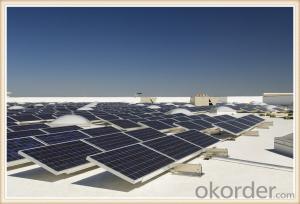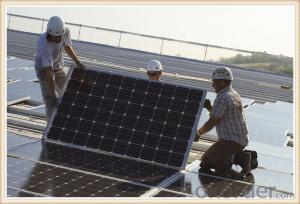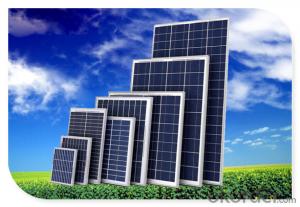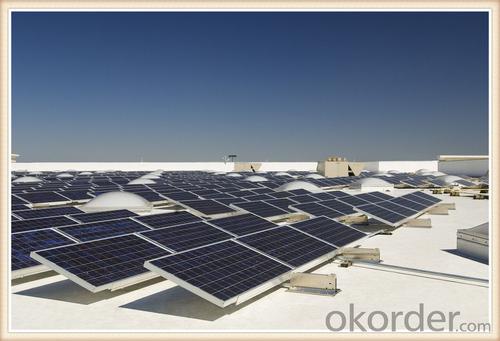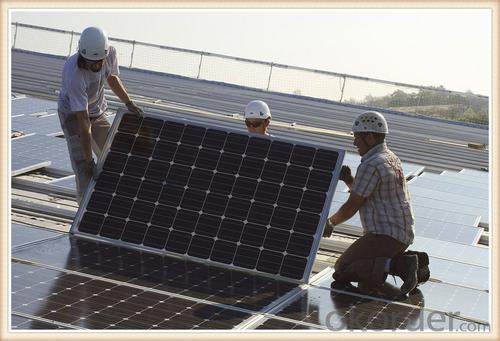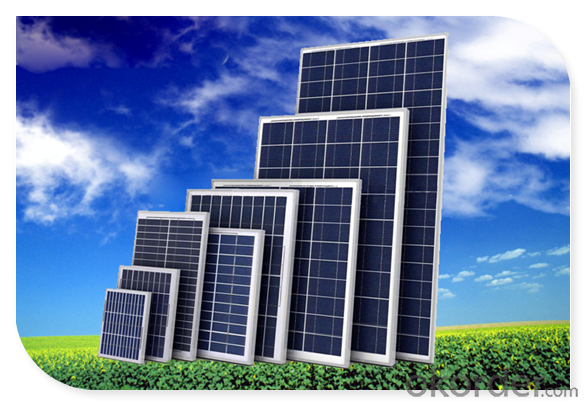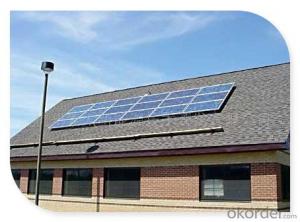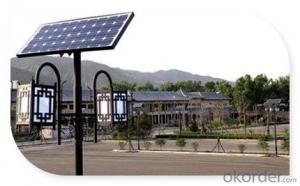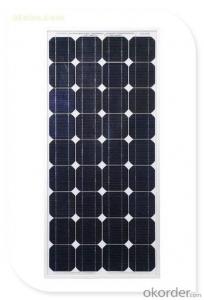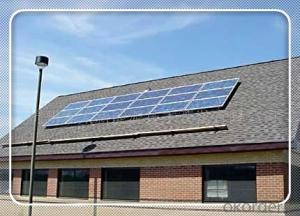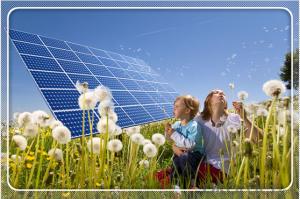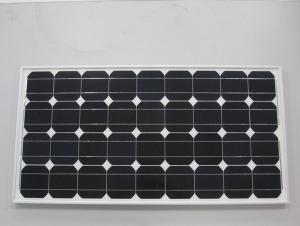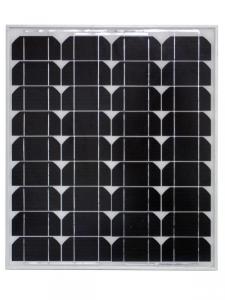BYD Solar Panels - 70W Efficiency Chinese Solar Panels for Sale 5-200W
- Loading Port:
- China main port
- Payment Terms:
- TT OR LC
- Min Order Qty:
- 11000 watt
- Supply Capability:
- 100000 watt/month
OKorder Service Pledge
OKorder Financial Service
You Might Also Like
Specification
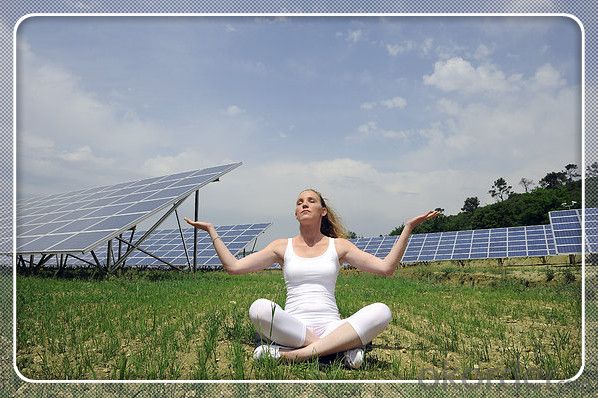
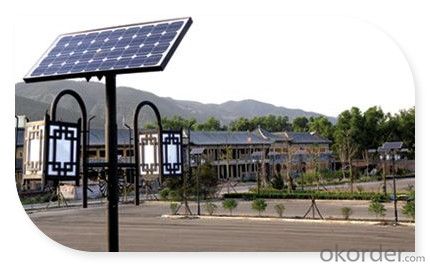
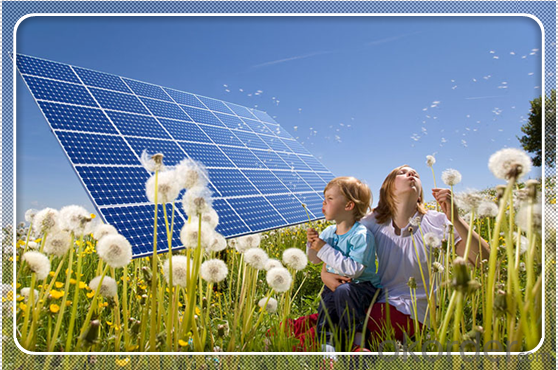
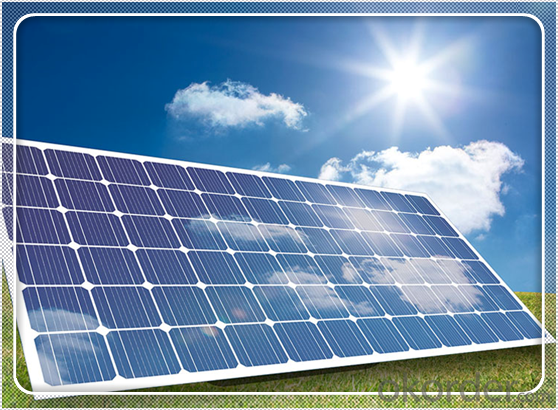
Solar Module Introduction
Solar Module is the core part of solar PV power systems, also is the highest value part of it. The function of Solar Module is to convert the sun's radiation to electrical energy, or transfer it to battery and store in it, or to drive the load running.
The Product has been widely used in space and ground, it mainly used for power generation systems, charging systems, road lighting and traffic signs areas. It could offer a wide range of power and voltage, and with high conversion efficiency, and long service life.
Solar modules use light energy (photons) from the sun to generate electricity through the photovoltaic effect. The majority of modules use wafer-based crystalline silicon cells or thin-film cells based on cadmium telluride or silicon. The structural (load carrying) member of a module can either be the top layer or the back layer. Cells must also be protected from mechanical damage and moisture. Most solar modules are rigid, but semi-flexible ones are available, based on thin-film cells. These early solar modules were first used in space in 1958.
Electrical connections are made in series to achieve a desired output voltage and/or in parallel to provide a desired current capability. The conducting wires that take the current off the modules may contain silver, copper or other non-magnetic conductive transition metals. The cells must be connected electrically to one another and to the rest of the system. Externally, popular terrestrial usage photovoltaic modules use MC3 (older) or MC4 connectors to facilitate easy weatherproof connections to the rest of the system.
Secification
Model Type | |
Peak Power-Pmax(W) | 5-200W |
Open Circuit Voltage-Voc(V) | 44.2 |
Maximum Power Voltage-Vmp(V) | 36 |
Short Circuit Current-Isc(A) | 5.4 |
Maximum Power Current-Imp(A) | 5 |
Maximum System Voltage | 1000V DC |
Maximum Series Fuse Rating | 10A |
Power Tolerance | -1~+3% |
Temperature Coefficients of Pmax | -0.45%/℃ |
Temperature Coefficients of Voc | -0.348%/℃ |
Temperature Coefficients of Isc | 0.031%/℃ |
Nominal Operating Cell Temperature | 44.5±2℃ |
Standard Testing Condition(STC) | Irradiance:1000W/m²;Temperature:25℃;AM=1.5 |
Qualification Test Parameters | |
Operating Temperature | -40℃~+85℃ |
Storage Temperature | -40℃~+85℃ |
Pressure Bearing | ≥5400Pascal/m² |
Wind Bearing | ≥5400Pascal/m² |
Mechanical Characteristics | |
Cell Size | Mono 125*125mm±0.5 |
No.of Cells | 72pcs(6*12) |
Dimension | 1580*808*40mm |
Weight | 15.5Kg |
Glass | 3.2mm High Transmission,Low Iron |
Frame | Anodized Aluminum Alloy |
Junction Box | IP65Rated |
Internal Diodes | 3 Bypass Diodes |
Cable | 1*4.0mm² Length 900mm |
Images
Packing & Shipping:
We have rich experience on how to pack the panels to make sure the safety on shipment when it arrives at the destination.
The normal size is packed by 25pcs/ carton / pallet. Paper carton for FCL shipping and wood carton for LCL shipping.
Warranty:
For c-Si panel: 25years output warranty for no less than 80% of performance, 10 years output warranty for no less than 90% of performance. Free from material and workmanship defects within 5 years.
For a-Si panel: 20 years output warranty for no less than 80% of performance, 10 years output warranty for no less than 90% of performance. Free from material and workmanship defects within 2 years.
FAQ:
(1)What price for each watt?
It depends on the quantity, delivery date and payment terms.
(2)What is your size for each module? Can you tell me the Parameter of your module?
We have different series of panels in different output, both c-Si and a-Si. Please take the specification sheet for your reference.
(3)Can you provide the peripheral products of the solar panels, such as the battery, controller, and inverter? If so, can you tell me how do they match each other?
Actually we are only manufacturer of solar panels, but we could try to source them for you in China if you need. We could provide you an optimal system design to instruct you how to install.
(4)Do you have the CE, TUV, UL Certification?
We’ve already passed all the tests, and any certificate is available.
(5)Have you ever sold your products to companies in my country?
Of course, we have customers in all general PV markets, but I think we should expand our market share along with the market growth.
(6)When did your company set up? You are a new company, how can I believe your quality?
We entered into Solar PV industry in 2005, now we have several plants in manufacturing of a-Si and c-Si panels, and our capacity is 220MW per year. Till now we have already passed all the tests by authorized laboratories, e.g. TUV, VDE, UL.
(7)Can you help us install the module if we cooperate with you?
We haven’t entered into installation sector, but we have the plan in near future.
(8) How do you pack your products?
We have rich experience on how to pack the panels to make sure the safety on shipment when it arrives at the destination.
(9) Can you do OEM for us?
Yes, we can.
(10)Can we visit your factory?
Surely, I will arrange the trip basing on your business schedule.
- Q: I need to use solar panels to charge lead acid batteries in an off-grid application. I understand that solar panels have a open circuit maximum voltage and an maximum amperage under no resistance, and that one can optimize the power output by regulating the load (resistance). If so, is just connecting 2 -volt solar panels to a lead-acid battery inefficient? Are there devices that will maximize 2 volt output power (by varying the resistance)? Am I on the right track here? Thanks for any help.
- The answer is actually quite complicated, but if you're planning on building just a very small system, most likely, the panel will be small and weak. In this case, connecting a panel that is 8 volts open circuit directly to a lead-acid battery is probably the most efficient way to charge. There are charge controllers that you can buy, some of which actively track the maximum power point for charging your battery. Unfortunately, those controllers might eat 5 or 0 watts, just to get you another few percent of charging efficiency. If your panel is only 50 watts in the first place, you can see that this is not a good deal. If you're getting serious panels (clue: price $500 each), then you may very well benefit from a charge controller with MPPT (max power point tracking). Lead-acid, either a flooded cell like your car battery, or AGM, are the standard for solar energy storage. Lithium ion is better in many ways, being less sensitive to temperature, state of discharge, and they are also lighter. Charging them is also more straightforward with the right circuitry. The problem is, they cost like $500 per kWh, compared with less than a tenth that price for lead-acid.
- Q: i see these things all over the internet on how to make 'home made solar panels' but all of them require you to buy the solar cells and nothing tells you how to make your own. So how can you make your own solar cells?
- Found this video demonstrating the process of making home made solar cells. I do not think this method would be very practical for an off the grid home system.
- Q: Can solar panels be installed on golf courses?
- Yes, solar panels can be installed on golf courses. In fact, many golf courses are adopting solar energy systems to reduce their carbon footprint and lower their energy costs. The large open spaces and ample sunlight available on golf courses make them ideal locations for installing solar panels. These panels can be placed on rooftops, parking structures, or even on the ground without interfering with the gameplay or aesthetics of the course.
- Q: my pool guy cleaned the filter and replaced the DE, but now my roof solar panels have started leaking. how do i stop the leak? does backwashing help in any way?
- If you do not isolate the solar system when backwashing your filter, you WILL pump DE into the panels and plug them and destroy them. At this point you may have to disconnect the panels, wash them from the RETURN SIDE (from the higher pipe and HOPE that the DE will flow out of the panels... most likely your pool guy just screwed up your solar real good... if the DE is plugging your panels, when winter comes your panels will split because they are holding water and the freezing water will split them... I hope your pool guy has insurance
- Q: Can solar panels be installed on a gas station or fueling facility?
- Yes, solar panels can be installed on a gas station or fueling facility. In fact, many gas stations and fueling facilities have started installing solar panels as a means to reduce their carbon footprint and decrease their reliance on traditional energy sources. Solar panels can provide renewable energy to power the facility's operations, including lighting, pumps, and other electrical systems. Additionally, solar installations can help gas stations and fueling facilities save on electricity costs in the long run.
- Q: Can solar panels be used to power a disaster relief operation?
- Yes, solar panels can be used to power a disaster relief operation. Solar panels are a viable and sustainable source of energy that can be deployed quickly in disaster-stricken areas. They can provide electricity for charging communication devices, running medical equipment, powering lighting systems, and supporting other essential operations during relief efforts. Additionally, solar panels are independent of existing power grids and can be set up in remote or inaccessible locations, making them an excellent solution for providing energy in emergency situations.
- Q: How do solar panels affect the roof warranty?
- Solar panels can affect the roof warranty in some cases. The installation of solar panels usually requires drilling holes into the roof, which may void certain parts of the warranty. However, many reputable solar companies offer their own warranty and insurance to cover any potential damages caused during installation. It's important to review the terms of both the roof warranty and the solar panel warranty before proceeding with the installation to ensure that you understand any potential impacts on the roof warranty.
- Q: Can solar panels be used for irrigation systems?
- Yes, solar panels can be used for irrigation systems. Solar energy can power the pumps and other electrical components required for irrigation, reducing the reliance on fossil fuels and making the system more sustainable and cost-effective.
- Q: Why should I have a Generator if I have Solar Panels.....?
- Well the sun don't shine at night does it. Nor much on cloudy days. You either need a generator or a whole lot of batteries. The batteries are a pain to maintain, they're expensive to install and they have to be replaced periodically. Generator's probably a decent alternative. I'm sure most people just stay on the grid for their backup. Even better if you live in an area where you're allowed to sell back excess capacity. If you're looking to spend this kind of money anyway you could look at a household fuel cell that runs on natural gas. Awesome technology, though if you buy the unit all prebuilt and ready to go it's going to run you like 50,000 bucks.
- Q: i've heard that solar panel batteries have to be replaced withen 5-0 years. how much do solar panel batteries cost? please include sources!
- Kirraina is right the only ingredient i'm able to upload is purchase the ideal, as quickly as. in case you purchase 2nd or 0.33 ideal it is not long till you need to purchase it lower back. something I study a protracted time in the past, and it nonetheless is sensible as we talk- do you comprehend why the wealthy are wealthy? they simply yet something as quickly as! EG. a stable refrigerator will final 30 years, slightly bit junk 5-6 years. a stable refrigerator isn't 5 X greater funds than the main inexpensive one. subsequently that's the ideal deal?there is another attention, new technologies, attempt and discover something that is unquestionably upgradeable. playstation overlook approximately automobile batteries they are no longer outfitted for image voltaic platforms. you need to use ideal deep charging batteries. Sorry, definite they are costly besides.
Send your message to us
BYD Solar Panels - 70W Efficiency Chinese Solar Panels for Sale 5-200W
- Loading Port:
- China main port
- Payment Terms:
- TT OR LC
- Min Order Qty:
- 11000 watt
- Supply Capability:
- 100000 watt/month
OKorder Service Pledge
OKorder Financial Service
Similar products
Hot products
Hot Searches
Related keywords
